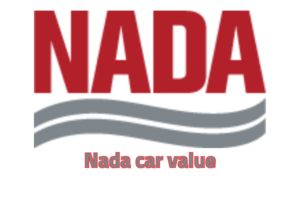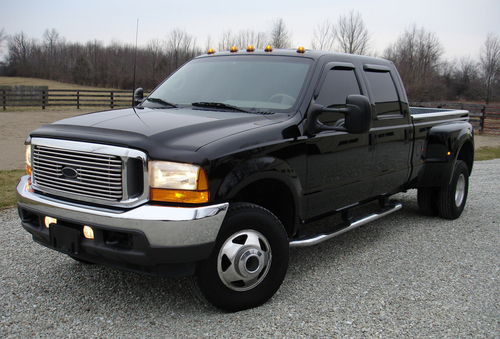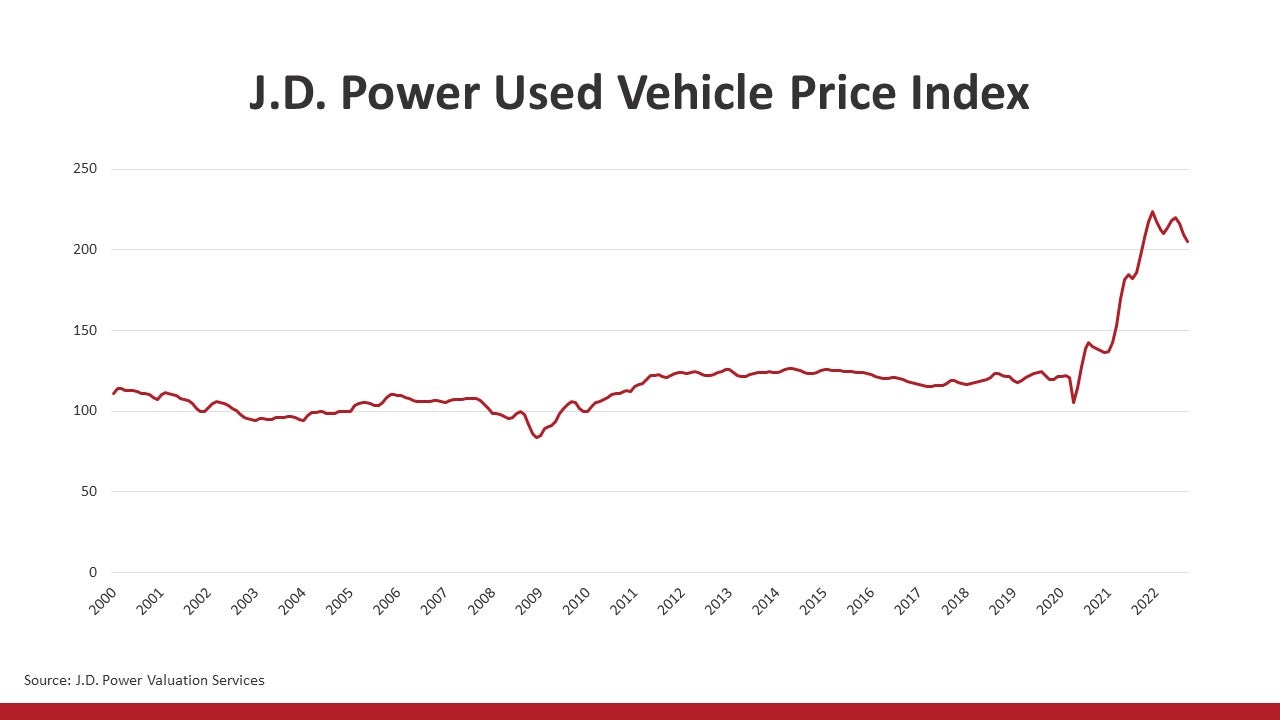Nada Semi Truck Value: Your Comprehensive Guide to Commercial Vehicle Valuation typestruckssale.com
The commercial trucking industry is the backbone of global commerce, and at its heart are the powerful semi trucks that haul goods across vast distances. For anyone involved in buying, selling, financing, or insuring these essential machines, understanding their true market value is paramount. This is where the National Automobile Dealers Association (NADA) Guides come into play. NADA semi truck values serve as a crucial benchmark, offering a standardized and widely respected methodology for assessing the worth of these complex and high-value assets.
This comprehensive guide will delve into the intricacies of NADA semi truck valuation, exploring its importance, the myriad factors that influence it, how to access and interpret these values, practical applications, tips for maximizing value, and common challenges. Whether you’re an owner-operator looking to trade up, a fleet manager expanding your operations, a lender evaluating collateral, or an insurer assessing risk, a firm grasp of NADA values is indispensable for making informed and profitable decisions.
Nada Semi Truck Value: Your Comprehensive Guide to Commercial Vehicle Valuation
Understanding NADA Guides for Semi Trucks
The National Automobile Dealers Association (NADA) has been a trusted authority in vehicle valuation for decades. While widely known for passenger car values, their expertise extends comprehensively to the commercial truck sector through the NADAguides Commercial Truck Guide. This guide is not merely a list of prices; it’s a sophisticated tool derived from a vast pool of real-world market data.
NADA compiles its values by meticulously analyzing data from various sources, including wholesale auctions, dealer transactions, fleet sales, and even individual listings. This rigorous process ensures that the values reflect current market trends and conditions, providing an objective benchmark. For semi trucks, this means accounting for the unique depreciation curves, specialized equipment, and operational demands that differentiate them from passenger vehicles. NADA values are relied upon by dealers for inventory assessment, lenders for loan underwriting, insurance companies for claims adjustments, and individuals for negotiation, making them a cornerstone of financial transactions in the trucking industry.
Factors Influencing NADA Semi Truck Value
Semi trucks are complex machines, and their value is determined by a confluence of factors, each contributing significantly to the final NADA assessment. Understanding these elements is key to accurately predicting or influencing a truck’s worth:
- Make and Model: Brand reputation plays a huge role. Manufacturers like Peterbilt, Kenworth, Freightliner, Volvo, and Mack often hold their value better due to perceived reliability, dealer network, and parts availability. Specific models within these brands also have varying demand.
- Year of Manufacture: Like all vehicles, semi trucks depreciate with age. Newer trucks generally command higher values, though the depreciation curve can flatten after the initial few years, especially for well-maintained models.
- Mileage: This is arguably the most critical factor. Semi trucks are built for high mileage, but lower mileage for a given age will always result in a higher value. High mileage signals more wear and tear on major components.
- Engine and Drivetrain: The specific engine (e.g., Cummins, Detroit Diesel, Paccar, Volvo, Mack) including its horsepower, torque, and emissions compliance (e.g., EPA 2010, GHG17) significantly impacts value. The type of transmission (manual vs. automated manual transmission – AMT) and rear axle ratios also play a part.
- Condition (Physical & Mechanical): This encompasses everything from the paint and bodywork, chrome, and interior cleanliness (seats, dashboard, sleeper) to the health of the engine, transmission, brakes, suspension, tires, and electrical systems. A well-maintained truck with minimal cosmetic flaws and no major mechanical issues will fetch a premium.
- Specifications and Features:
- Sleeper Size: Larger sleepers (e.g., 72-inch, 80-inch) for long-haul operations are often more desirable than day cabs.
- Axle Configuration: Tandem axles are standard, but tri-axles or specialty setups can impact value based on their niche use.
- Fifth Wheel Type: Fixed or air-slide fifth wheels.
- Specialized Equipment: Wet kits (for dump trailers, walking floors), power take-offs (PTOs), auxiliary power units (APUs), specific suspension types, and advanced safety features (collision mitigation, lane departure warning) can add significant value.
- Maintenance History: Comprehensive and verifiable service records demonstrating regular preventative maintenance and timely repairs are invaluable. They provide buyers with confidence in the truck’s reliability and can justify a higher asking price.
- Geographic Location: Regional demand and specific industry needs can influence values. A truck configured for logging might be worth more in the Pacific Northwest than in Florida.
- Market Demand & Economic Conditions: Fluctuations in freight rates, fuel prices, new truck production, and overall economic health directly impact the demand for used trucks, thus affecting their value.
- Emissions Regulations: Compliance with current and upcoming emissions standards can significantly affect the value of older trucks, especially if they require costly modifications or are restricted in certain areas.
How to Access and Interpret NADA Semi Truck Values
Accessing NADA values is straightforward, primarily through their official website, NADAguides.com, or through subscription services provided to industry professionals.
Steps to Access Values:
- Navigate to NADAguides.com: Look for the "Commercial Trucks" or "Heavy Duty Trucks" section.
- Input Truck Information: You’ll be prompted to enter specific details about the semi truck, including:
- Year of Manufacture
- Make (e.g., Freightliner, Peterbilt)
- Model (e.g., Cascadia, 389)
- Engine Manufacturer and Horsepower
- Transmission Type (manual/AMT, number of speeds)
- Axle Configuration
- Sleeper Size (if applicable)
- Estimated Mileage
- Select Condition: This is crucial. NADA typically provides values based on several condition categories:
- Clean Retail: Represents a truck in excellent condition, ready for sale by a dealer, requiring minimal reconditioning. This is the highest value.
- Average Trade-in: Reflects a truck in good mechanical and cosmetic shape, but might require some reconditioning before resale. This is what a dealer might offer for a trade-in.
- Rough Trade-in: Describes a truck with significant mechanical or cosmetic issues that would require substantial repairs or reconditioning. This is the lowest value.
- Clean Trade-in: Sometimes provided, falls between Clean Retail and Average Trade-in, representing a very good condition trade-in.
Interpreting the Values:
The NADA guide will present a base value for the truck based on its core specifications. You then need to make adjustments for:
- Mileage: NADA provides adjustment tables for mileage above or below the average for that year/model.
- Optional Equipment: Add-ons like APUs, wet kits, specific chrome packages, or premium interiors will have an associated value increase.
- Condition Specifics: While you select a general condition, the actual truck might fall between categories. Use the values as a range and adjust based on a detailed inspection.
Remember, NADA values are a guide. They provide an excellent starting point for negotiations but should always be combined with a thorough physical inspection and consideration of current market dynamics.
Practical Applications of NADA Values
NADA semi truck values are not just theoretical figures; they are highly practical tools used across the commercial trucking ecosystem:
- For Buyers: NADA values empower buyers to negotiate confidently. Knowing the fair market range prevents overpaying and helps in securing favorable financing terms, as lenders use these values to assess collateral.
- For Sellers: Whether you’re an individual owner-operator or a fleet manager, NADA values help you set a competitive and realistic asking price. They provide a strong basis for justifying your price to potential buyers, showcasing that your valuation is grounded in industry standards.
- For Lenders and Financial Institutions: Banks and credit unions rely heavily on NADA values to determine the loan-to-value (LTV) ratio for financing semi trucks. This assessment helps them manage risk and ensures the collateral adequately covers the loan amount.
- For Insurance Companies: In the event of a total loss claim, NADA values are a primary reference for determining the actual cash value (ACV) of the semi truck, ensuring fair compensation to the policyholder. They also influence premium calculations.
- For Dealers: Truck dealerships use NADA guides daily for appraising trade-ins, pricing their used inventory, and managing their asset portfolios. It ensures consistency and fairness in their transactions.
Tips for Maximizing Your Semi Truck’s NADA Value
While you can’t change your truck’s make, model, or year, you can significantly influence its NADA value and market appeal by focusing on factors within your control:
- Maintain Meticulous Records: Keep every service receipt, repair order, and maintenance log. A complete, well-organized history demonstrates responsible ownership and proactive care, instilling confidence in buyers and justifying a higher value.
- Prioritize Preventative Maintenance: Adhere strictly to manufacturer-recommended service schedules. Regular oil changes, filter replacements, fluid checks, and component inspections prevent costly breakdowns and extend the life of major components.
- Address Repairs Promptly: Don’t defer necessary repairs. Small issues can quickly escalate into major, expensive problems that significantly reduce value. Fixing them proactively shows commitment to the truck’s health.
- Maintain Appearance (Interior & Exterior): A clean truck makes a strong first impression. Regularly wash and wax the exterior, polish chrome, and keep the interior spotless. Address minor dents, scratches, and torn upholstery. A well-presented truck suggests it has been cared for mechanically.
- Monitor Tire Condition: Tires are a significant expense. Ensure they have good tread depth and even wear. New or nearly new tires add tangible value.
- Ensure All Systems Work: Test all lights, gauges, HVAC, windows, and other accessories. A non-functional component signals potential underlying electrical or mechanical issues.
- Consider Professional Detailing: Before selling, a professional detail can dramatically improve appearance, especially in the interior, removing odors and grime.
- Highlight Desirable Features: When listing, clearly articulate any valuable add-ons like APUs, custom sleepers, premium interiors, or recent major component overhauls (engine, transmission rebuilds).
Challenges and Limitations of NADA Values
While NADA provides an invaluable benchmark, it’s essential to recognize its limitations and challenges:
- Generalization vs. Specificity: NADA values are averages. They cannot perfectly account for every unique customization, regional market nuance, or specific wear pattern of an individual truck. Highly specialized trucks (e.g., heavy haul, vocational) may have values that deviate.
- Subjectivity of Condition: What constitutes "Clean Retail" to one person might be "Average Trade-in" to another. Disagreements over condition are common, necessitating detailed inspections and open communication.
- Rapid Market Fluctuations: While NADA updates its data regularly, the commercial truck market can be volatile due to economic shifts, fuel price changes, freight demand, or new emissions regulations. Real-time market data might sometimes slightly diverge from published NADA values.
- Custom Modifications: NADA provides values for standard configurations. Aftermarket modifications or extensive custom work may not be fully captured, requiring additional appraisal or negotiation based on their perceived value to a specific buyer.
- Lack of Detailed History: NADA values assume a typical service history for the given mileage. A truck with a known history of neglect or major unreported accidents will be worth significantly less, regardless of its NADA guide value.
Table: Illustrative NADA Semi Truck Value Ranges (Hypothetical)
Please Note: These values are purely illustrative and hypothetical. Real NADA values fluctuate based on exact specifications, market conditions, and regional demand. Always consult the official NADAguides.com for precise, up-to-date valuations.
| Year | Make/Model | Engine Type | Mileage Range | Condition | Estimated NADA Value Range | Key Considerations |
|---|---|---|---|---|---|---|
| 2019 | Freightliner Cascadia 126 | Detroit DD15 (455HP) | 400,000 – 500,000 | Clean Retail | $65,000 – $80,000 | APU, automated manual trans, well-maintained |
| 2019 | Freightliner Cascadia 126 | Detroit DD15 (455HP) | 600,000 – 700,000 | Average Trade-in | $45,000 – $55,000 | Higher mileage, minor wear, needs tires |
| 2017 | Peterbilt 579 | PACCAR MX-13 (500HP) | 600,000 – 750,000 | Clean Retail | $55,000 – $70,000 | Premium interior, manual transmission, good records |
| 2017 | Peterbilt 579 | PACCAR MX-13 (500HP) | 800,000 – 950,000 | Rough Trade-in | $30,000 – $40,000 | High mileage, cosmetic flaws, some repairs needed |
| 2021 | Volvo VNL 860 | Volvo D13 (425HP) | 200,000 – 300,000 | Clean Retail | $90,000 – $110,000 | Low mileage, safety features, I-Shift trans |
| 2015 | Kenworth T680 | Cummins ISX15 (485HP) | 750,000 – 900,000 | Average Trade-in | $35,000 – $45,000 | Standard sleeper, older emissions, good mechanical |
| 2023 | Mack Anthem | Mack MP8 (505HP) | 50,000 – 150,000 | Clean Retail | $120,000 – $145,000 | Near-new, full warranty, premium features |
Frequently Asked Questions (FAQ) about NADA Semi Truck Value
Q1: Is NADA the only reliable source for semi-truck values?
A1: While NADA is a primary and highly respected source, it’s not the only one. Other sources like Ritchie Bros. Auctioneers (for auction results), TruckPaper.com (for listed prices), and direct dealer appraisals can provide additional market context. However, NADA remains the industry standard for standardized valuation.
Q2: How often are NADA values updated for semi trucks?
A2: NADA constantly collects and analyzes market data. Their online guides are typically updated continuously, reflecting the most recent sales and market trends. Printed guides might have monthly or quarterly editions.
Q3: Can I get an exact NADA value for my specific truck?
A3: NADA provides a precise base value for a specific year, make, model, and configuration, along with adjustments for mileage and options. However, the final "exact" value in a transaction will always be influenced by the truck’s unique condition upon physical inspection, current market demand, and negotiation between parties.
Q4: Does NADA account for custom modifications or aftermarket add-ons?
A4: NADA guides account for common factory options and some widely recognized aftermarket installations (like APUs or wet kits) with specific value adjustments. However, highly customized modifications or unique personalizations may not be fully reflected. Their value will often depend on their appeal to a specific buyer.
Q5: What’s the difference between "Trade-in" and "Retail" values?
A5: The "Trade-in" value (e.g., Average Trade-in) is typically what a dealership would offer you for your truck when you’re buying another one from them. It accounts for the dealer’s reconditioning costs, overhead, and profit margin. The "Retail" value (e.g., Clean Retail) is the price a dealership would likely sell a well-conditioned, reconditioned truck for to a retail customer. The retail value is almost always higher than the trade-in value.
Conclusion
Understanding NADA semi truck value is an essential skill for anyone operating within the commercial trucking industry. It provides a robust, data-driven foundation for assessing the worth of these critical assets, empowering informed decisions for buyers, sellers, lenders, and insurers alike. While NADA guides offer a comprehensive and trusted benchmark, remember that they are a tool – a powerful starting point that must be combined with a thorough physical inspection, an understanding of a truck’s unique history, and an awareness of the ever-evolving market dynamics. By leveraging NADA values wisely and maintaining your semi truck meticulously, you can ensure fair transactions and maximize the return on your investment in the heart of the supply chain.



